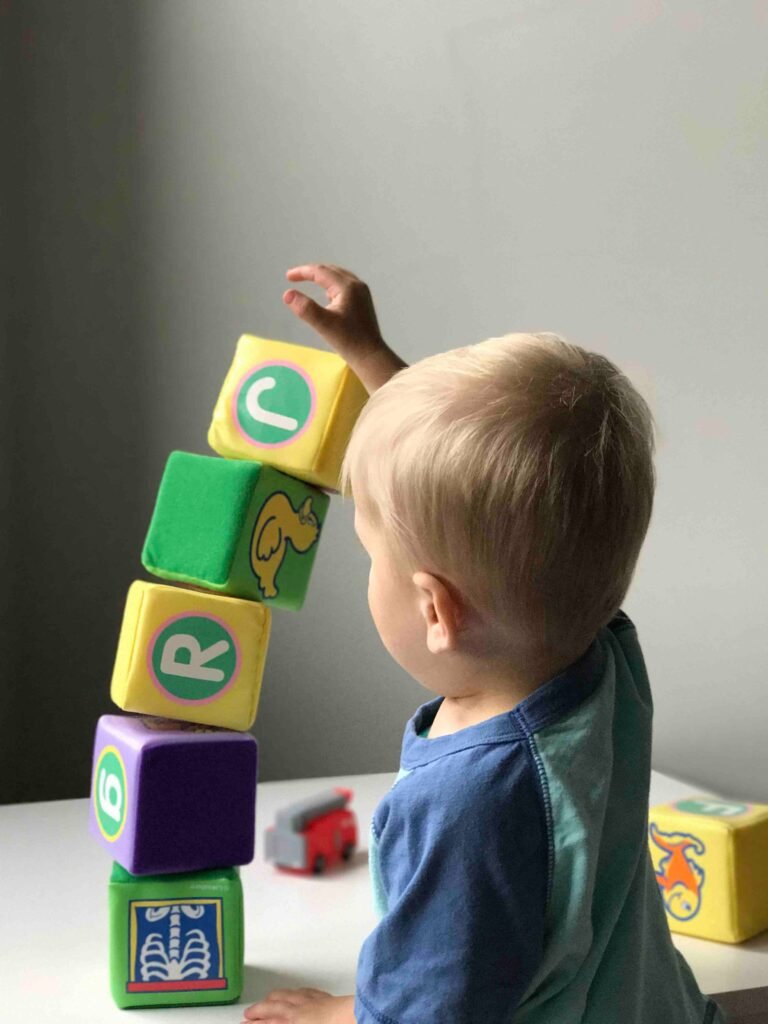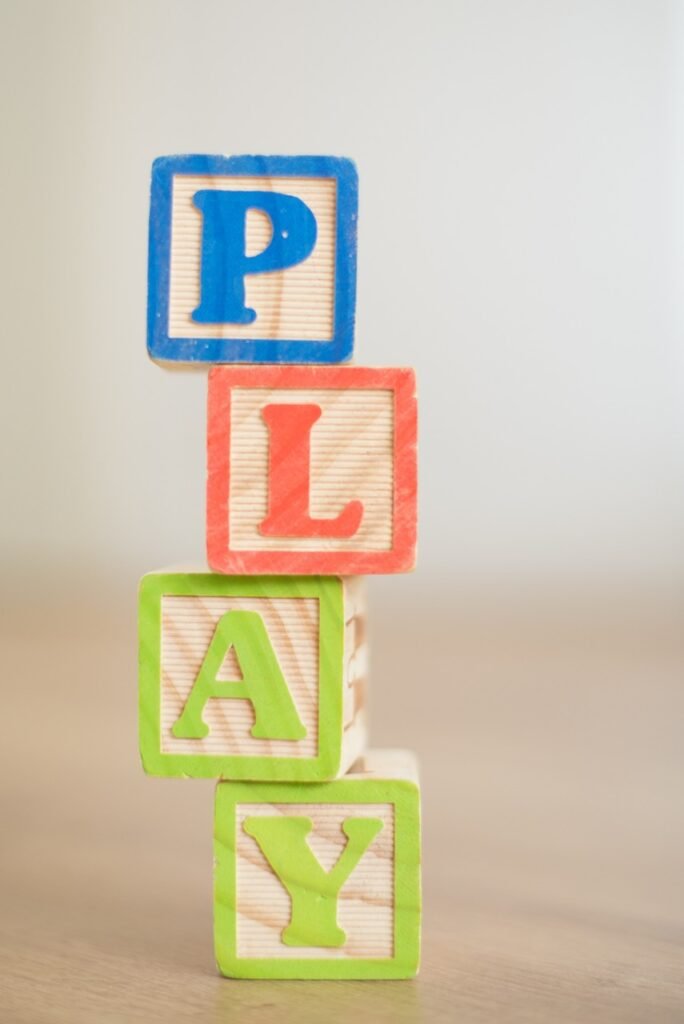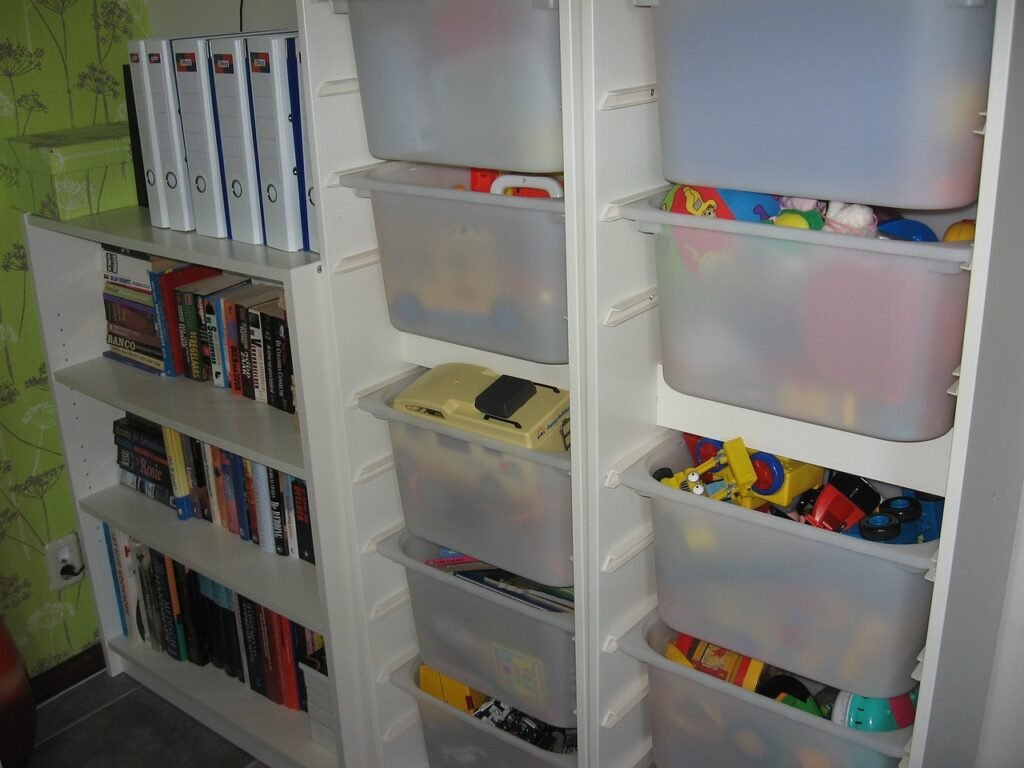
As a parent, it can often feel like a never-ending battle to keep our homes from being taken over by a sea of toys. From stuffed animals to building blocks, it seems like our little ones’ playthings multiply overnight. But fear not, fellow moms!
It is possible to tame the toy tsunami and keep your home (relatively) clutter-free. In this post, we’ll discuss practical ways to organize toys, whether you have limited space or no designated playroom.
These tips will not only help you in the process of organizing toys, but also provide a system to keep them organized as your kids play. So let’s dive in and conquer that toy chaos once and for all!
Harnessing the Toy Chaos: Practical Storage Solutions

Do you feel like you’re constantly battling a never-ending sea of toys in your home? As parents, it’s no secret that our little ones’ playthings seem to multiply overnight, leaving us with the daunting task of trying to keep our homes clutter-free. But fear not, fellow moms! With a little organization and the right storage solutions, you can tame the toy chaos and reclaim your living space.
When it comes to organizing toys, practical storage solutions are key. One easy system is to invest in bins or baskets with labels. These can be placed in any room or corner of your house, providing a designated space for toys to be stored when not in use. By labeling each bin or basket with specific categories, such as “Legos,” “Dolls,” or “Art Supplies,” you’ll not only make it easier for your child to find and put away their toys, but you’ll also maintain a sense of order within your home.
A great tip to creating labels is to write the word and put a picture of the category- i.e. dolls- so the the lil’ ones know exactly where to put each toy.
If you don’t have a designated playroom, don’t worry! There are still plenty of ways to keep your toys organized. Consider using furniture with hidden storage compartments, such as ottomans or benches. These pieces not only serve as functional seating options but also provide a discreet space to stash away toys when guests come over or during a quick tidy-up session.
Another space-saving solution is to utilize wall storage. Install shelves or hanging nets to display and store toys, keeping them off the floor and out of the way.
It’s important to establish a system that works for you and your family to maintain the organization of toys as your kids play. Encourage your children to participate in the cleanup process by making it a fun and interactive activity. Set aside dedicated cleanup times throughout the day or before bedtime, and make it a habit for everyone in the family to put away their toys in their designated storage spots.
By keeping a system and staying consistent with organization, you can ensure that toys are always in their rightful places. This not only helps to keep your home clutter-free but also allows your children to easily find their favorite toys and engage in imaginative play.
Remember, organization is an ongoing process, so don’t be afraid to reassess and adjust your storage solutions as your child’s toy collection grows and changes.
With these practical storage solutions and a little dedication, you can harness the toy chaos and reclaim your home from the overwhelming tsunami of toys. So dive in, get organized, and enjoy a clutter-free space where your children’s creativity can flourish!
Making the Most of Your Space: Toy Organization for Limited Areas

Living in a small apartment or have limited space in your home? Don’t worry, you can still effectively organize your kids’ toys even if you don’t have a designated playroom. The key is to make the most of the space you have and get creative with storage solutions.
First, consider utilizing underutilized spaces in your home. Look for hidden nooks and crannies that can be transformed into toy storage areas. For example, under-the-bed storage bins can be a great option for keeping toys out of sight while maximizing space. You can also utilize the space under a staircase or even install shelves or hooks on the back of doors.
If you don’t have much floor space, think vertically. Install shelves or floating shelves on the walls to create additional storage areas for toys. You can also use hanging storage organizers that can be hung on the back of doors or on closet rods. These are great for storing smaller toys or arts and crafts supplies.
When it comes to toy organization in limited areas, it’s important to think outside the box. Consider repurposing furniture for storage purposes. For example, a coffee table with hidden storage compartments can double as a play table and provide a space for your little ones to play while also keeping their toys neatly tucked away.
As discussed before, ottomans or benches with hidden storage compartments serve as multi-functional objects and are a great idea for small spaces. These can serve as seating options while providing a discreet space to stash away toys.
Another tip is to rotate toys. If you don’t have enough space to display all of your kids’ toys at once, consider keeping some in storage and rotating them out every few weeks. This not only helps to keep things organized, but it also keeps your kids excited and engaged with their toys.
Remember, the key to organizing toys in limited areas is to be creative and maximize the space you have. With a little ingenuity and some practical storage solutions, you can create a clutter-free and organized space for your kids to play, even if you don’t have a designated playroom. So don’t let limited space hold you back from reclaiming your home from the toy chaos.
Establishing an Effective System: Keeping Up with Kids’ Playtime

Toy organization is not just about finding a place to store the toys. It’s about establishing an effective system that allows you to keep up with your kids’ playtime and ensure that everything stays organized.This is especially important if you don’t have a designated playroom and your living space is limited.
The first step in establishing an effective system is to involve your kids in the process. Teaching them to clean up after themselves and put their toys away will not only help them develop a sense of responsibility, but it will also make your life a whole lot easier.
Encourage them to participate in the cleanup process by making it a fun and interactive activity. You can set aside dedicated cleanup times throughout the day or before bedtime, and make it a habit for everyone in the family to put away their toys in their designated storage spots.
If you don’t have a playroom, it’s important to have designated areas for toys in each room. This will help prevent toys from getting scattered all over the house and ensure that everything stays organized. Consider using bins or baskets with labels in each room, so that toys can be easily stored and retrieved. Having specific categories for each bin, such as “Cars,” “Dolls,” or “Blocks,” will make it even easier for your kids to find and put away their toys.
Another important aspect of keeping up with your kids’ playtime is to regularly assess and declutter their toy collection. As your kids grow, their interests and preferences change, and they may outgrow certain toys. Regularly going through their toys and donating or selling ones that are no longer used will not only free up space but also make it easier to keep the remaining toys organized.
Lastly, be consistent with your organization system. It’s easy to let things slide and allow toys to pile up, but staying on top of the organization will save you time and stress in the long run. Make it a habit to tidy up at the end of each day, and encourage your kids to do the same. By keeping up with your kids’ playtime and maintaining an organized environment, you’ll not only create a clutter-free space but also ensure that your kids can easily find and enjoy their toys.
Establishing an effective system to keep up with your kids’ playtime is essential for maintaining an organized home, especially if you don’t have a designated playroom.
Toy Organization For Different Ages: From Babies to Older Kids

When it comes to toy organization, it’s important to consider the different needs and stages of development for babies, toddlers, and older kids. Here are some practical tips to help you keep the toys organized for each age group, even if you don’t have a designated playroom.
For babies, the key is to keep things simple and safe. Start by sorting toys into categories such as soft toys, rattles, and teething toys. Use small baskets or bins to store these toys within easy reach, making sure they are safe and age-appropriate. Clear, labeled containers are also helpful for keeping smaller toys organized and ensuring that nothing gets lost.
As your little ones transition into the toddler stage, their toy collection will likely grow. It’s important to establish a system that allows them to easily access and put away their toys. Consider using low shelves or bookcases to display their toys at their eye level. Use clear bins or baskets to store different types of toys, such as building blocks, stuffed animals, and puzzles. This will not only keep things organized but also encourage independent play and help develop their sorting skills.
For older kids, involving them in the organization process can be a fun activity. Work together to sort toys into categories based on their interests, such as action figures, dolls, or art supplies. Utilize storage solutions that can accommodate their growing collection, such as modular shelving units or hanging organizers. It’s also a good idea to teach them about decluttering and donating toys they no longer use, helping them develop a sense of responsibility and giving back to others.
No matter the age group, it’s important to keep toys organized as play happens. Encourage your kids to clean up after themselves and put toys back in their designated spots. This not only helps maintain an organized space but also teaches them valuable life skills and promotes a sense of responsibility.
Remember, organizing toys for different ages requires flexibility and adaptation. As your children grow and their interests change, be willing to reassess and adjust your storage solutions. With a little planning and consistency, you can create an organized and clutter-free environment that fosters creativity and imaginative play for your little ones.
Consistency is Key: Maintaining your Organized Toy Environment

Now that you’ve successfully organized your toys, the key to maintaining an organized toy environment is consistency. It’s important to establish a routine and stick to it to ensure that your home stays clutter-free and your kids can easily find and enjoy their toys. Here are some tips for maintaining your organized toy environment, whether you have a designated playroom or not.
If you don’t have a playroom, it’s crucial to designate specific areas in each room for toys. This will help prevent toys from getting scattered all over the house. Make sure to communicate to your kids where their toys belong and encourage them to put them away after each play session. By consistently reinforcing this habit, it will become second nature for them.
Regularly decluttering and organizing toys is another key aspect of maintaining an organized environment. As your children grow, their interests change, and they may outgrow certain toys. Regularly assess their toy collection and donate or sell toys that are no longer used. This not only frees up space but also ensures that the remaining toys are organized and easily accessible.
Encouraging your kids to keep their toys organized as they play is also essential. Teach them the importance of putting away one toy before taking out another. By instilling this habit, you’ll avoid the buildup of toys scattered around the house. It’s also helpful to set aside dedicated cleanup times throughout the day or before bedtime. Make it a family activity and create a fun and interactive atmosphere while tidying up.
Consistency is key when it comes to maintaining an organized toy environment. Stick to your organization system and don’t let things slide. By consistently reinforcing the habit of putting away toys after playtime, you’ll ensure that your home remains clutter-free and your children’s favorite toys are always within reach.
Remember, organization is an ongoing process, and it’s important to reassess and adjust your storage solutions as your child’s toy collection grows and changes. With a little consistency and dedication, you can maintain an organized toy environment that fosters creativity and imaginative play for your little ones.
So keep up the good work, and enjoy a clutter-free home where your children’s toys are always organized and ready to be played with.
